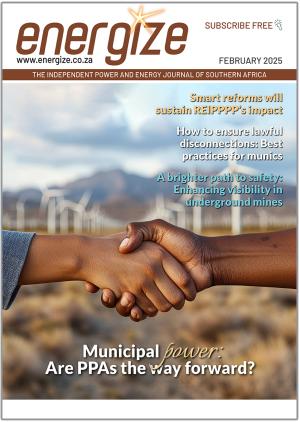South Africa’s Renewable Energy Independent Power Producer Procurement Programme (REIPPPP) has been stalled by persistent challenges, including unallocated capacity, complex licensing processes, and inadequate transmission infrastructure. These issues have slowed the country’s renewable energy progress, but recent discussions have inspired confidence that government is taking meaningful steps to address the hurdles.
At a renewable energy seminar in Midrand on Monday, Minister of Electricity Kgosientsho Ramokgopa announced plans to significantly ramp up renewable energy procurement, acknowledging the bottlenecks from previous bid windows, which saw 10 000 MW of renewable energy projects from past bid windows remain unallocated due to various constraints, including licensing delays and grid access.
Ramokgopa addressed stakeholders, saying, “How can this be improved?” – a question that framed the seminar’s focus on identifying the root causes of delays. The Ministry is now working directly with industry players to map out solutions, signalling a proactive stance in overcoming barriers.
“This engagement elevates the dialogue with the government, particularly through the Ministry of Electricity, to a new level of conviction and problem-solving,” Brian Day, Chairperson of the South African Independent Power Producers Association (SAIPPA), told Energize.
Licensing and transmission
One of the main obstacles is the slow and cumbersome licensing process for independent power producers (IPPs), which has deterred investment in the renewable sector.
“Capital will not wait,” he said, stressing the urgency of streamlining procedures to retain investor interest. The Minister also emphasised the need to accelerate renewable energy deployment, particularly as South Africa faces mounting pressure to decarbonise, with the European Union’s carbon border adjustment mechanism threatening the country’s export markets for carbon-intensive products.
To address this, Ramokgopa announced plans to simplify licensing requirements, with the possibility of these processes either falling away entirely or being significantly reduced. “We need to account for green electrons in the grid, and that requires us to be more aggressive in onboarding renewables,” he said.
Transmission infrastructure emerged as another critical challenge. Grid capacity was the “elephant in the room”, Ramokgopa said, noting that without adequate grid access, renewable energy projects could not move forward, regardless of progress in other areas.
Stakeholders called for streamlined and updated rules for grid connection. Day proposed a “first-ready, first-connected” principle to ensure grid connection occurs alongside other project development activities, rather than being a final, uncertain step. “The current rules are not practical. They require developers to invest heavily without clarity on their ability to connect to the grid. This creates unrealistic financial risks,” he said.
A curtailment scheme, designed to limit generation output during periods of grid congestion, was awaiting processing by the National Energy Regulator of South Africa (NERSA). This scheme was drafted by the National Transmission Company South Africa (NTCSA) with input from the private sector. The NTCSA’s grid expansion programme is lagging behind what is required and there is a need for more agile contracting strategies and concessions to enable private sector involvement in building new transmission lines and substations, Day said. “The rapid implementation of new transmission infrastructure is critical to support the scaling up of renewable energy.”
Affordability
Renewable energy also plays a key role in solving energy affordability issues. “Since the launch of bid window 1, solar power costs have dropped by 85% and wind costs have decreased by 75%. By investing in these technologies, we can significantly reduce electricity prices and make energy more accessible,” he said.
Ramokgopa called for an “ultra-aggressive” approach to resolving these issues. “We must onboard renewables at a rapid pace—on steroids, if necessary. But this can only happen if we fix the problems you’ve highlighted,” he said, addressing the audience.















